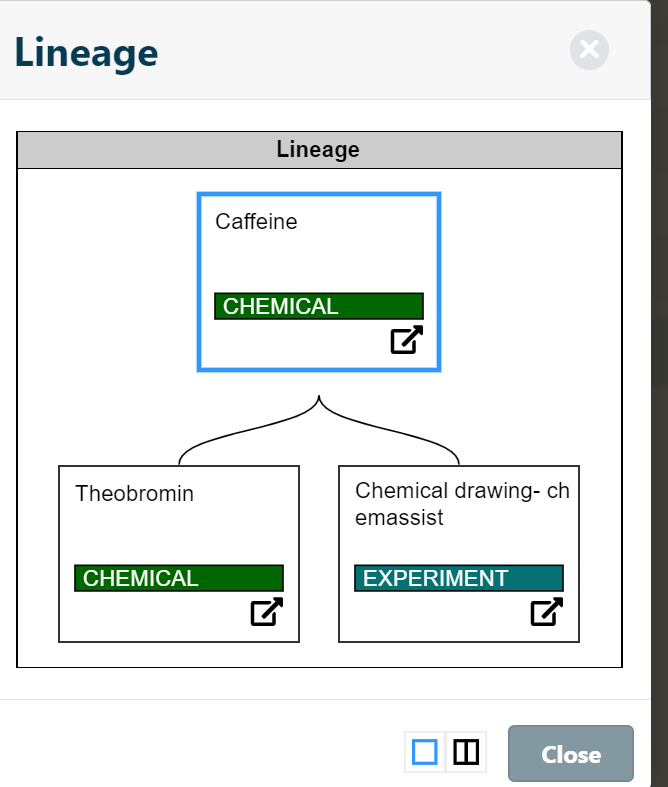Chemical Registry
ChemAssist introduces a new sample field option called Chemical structure that can be added to a sample type template. Note: this functionality needs to be activated within the add-on Configuration: by activating Enable MarvinJS chemical structure as field type in Sample Types.
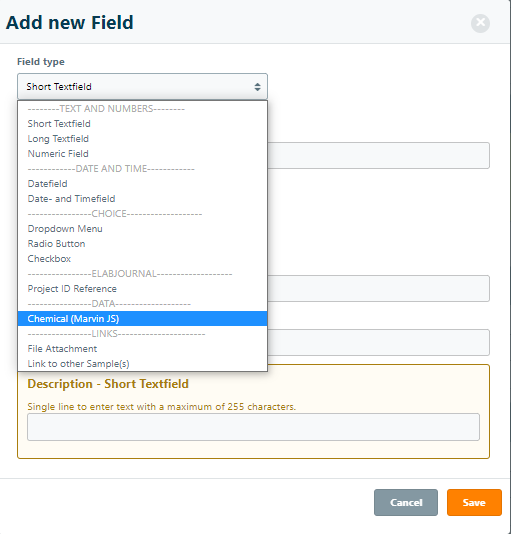
When selected, a new sample specification field option is available containing a MarvinJS sketchpad becomes available when adding a sample.
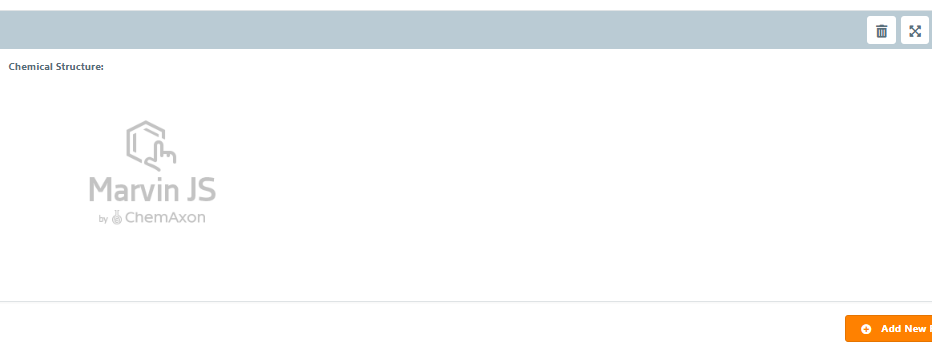
Adding structures to the chemical structure sample field
When creating a new sample or editing an existing sample in eLabInventory, users can add a molecule drawing to the chemical structure field via two methods:
- Draw a molecule: You can draw their chemical structure on the sketchpad, which is supported by the MarvinJS add-on
- Upload a structure file: You can upload a molfile of an entire molecule to the sketchpad.
Adding structure by drawing manually
ChemAssist provides a simple and clean sketchpad interface for visualizing the structural characteristics of drawn or imported molecules. You can rotate, mirror, and edit molecules by section or in their entirety.
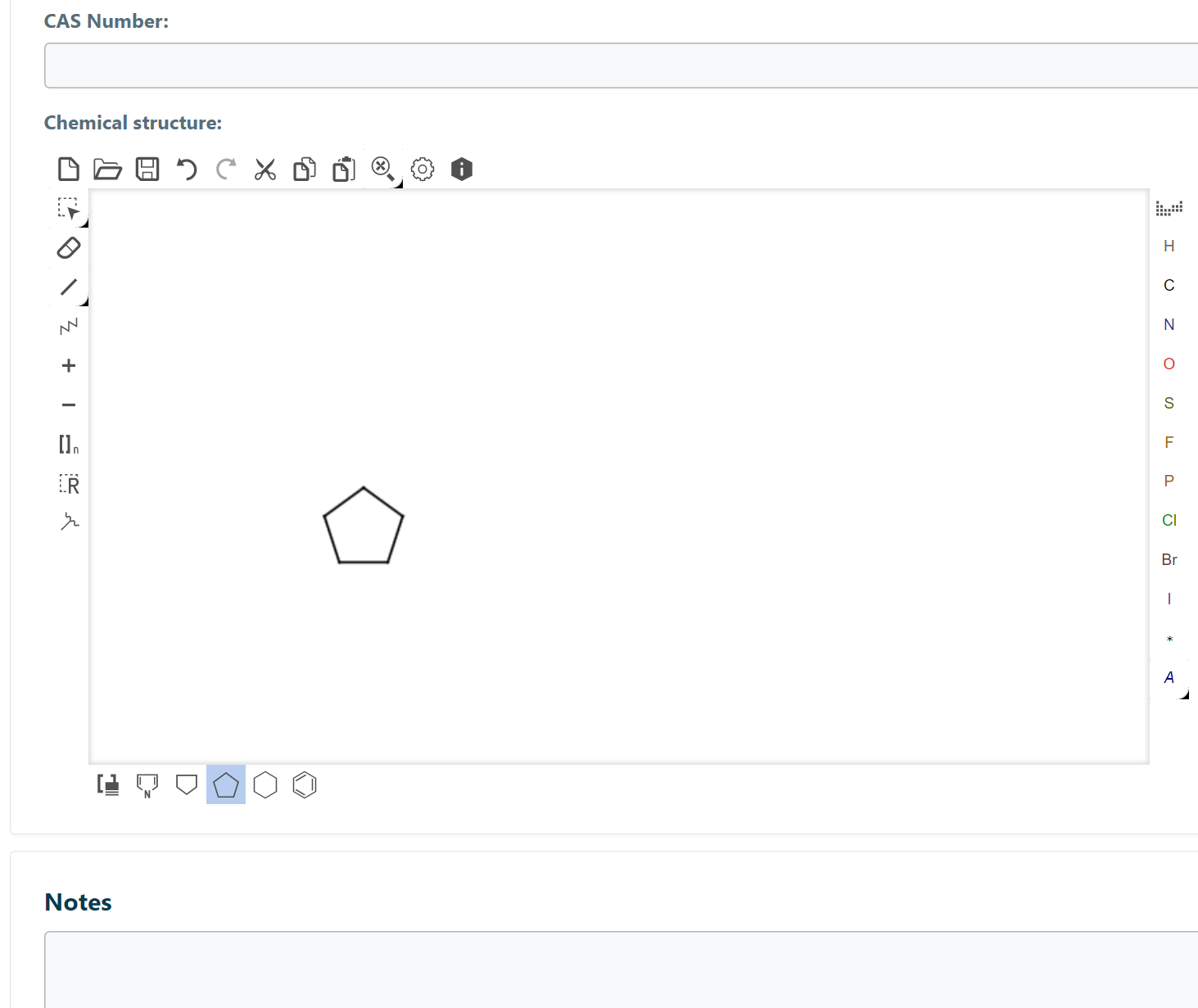
To draw a chemical structure, Edit the Sample. ChemAssist’s sketchpad is powered by the Marvin JS add-on; for more information on how to use MarvinJS, please refer to the MarvinJS User Guide.
Uploading a molecular structure as a mol file
To upload a molfile, click the Import (open folder) icon in the top-left corner of the sketchpad interface to open the Import pop-up window. Click the Choose File button and select the molfile from the desktop to upload the file into the sketchpad.
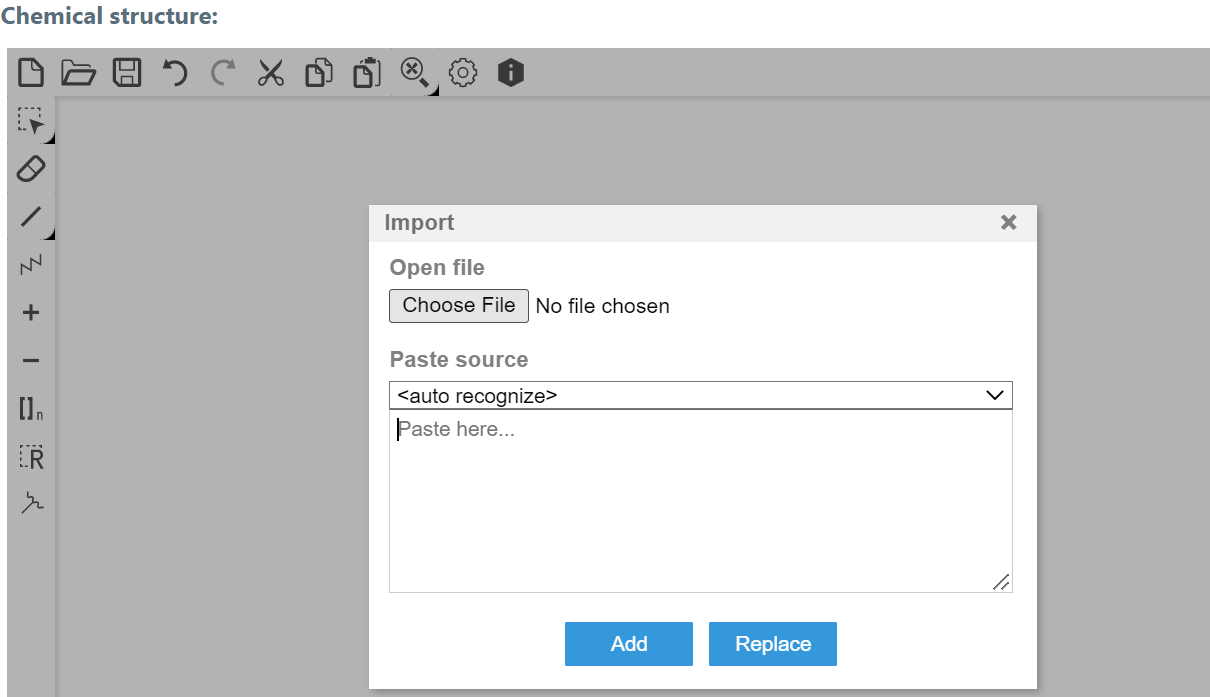
Once the sample has been saved, the entire chemical structure will be visible on the sample data sheet, along with its Absolute and Unique SMILES codes. Additionally, ChemAssist will generate an MDL molfile of the structure, which can be downloaded by clicking on the “Download MDL molfile” link.
FAQ Note: the most common molecules mol files can be downloaded from the internet, which can be imported as a base structure of a new molecule and then modified. In the case of more complex structures, the structure can be drawn once, exported as a mol file, and then reimported into eLab to create new variations. Copy-pasting a drawn structure into a new window is currently not supported
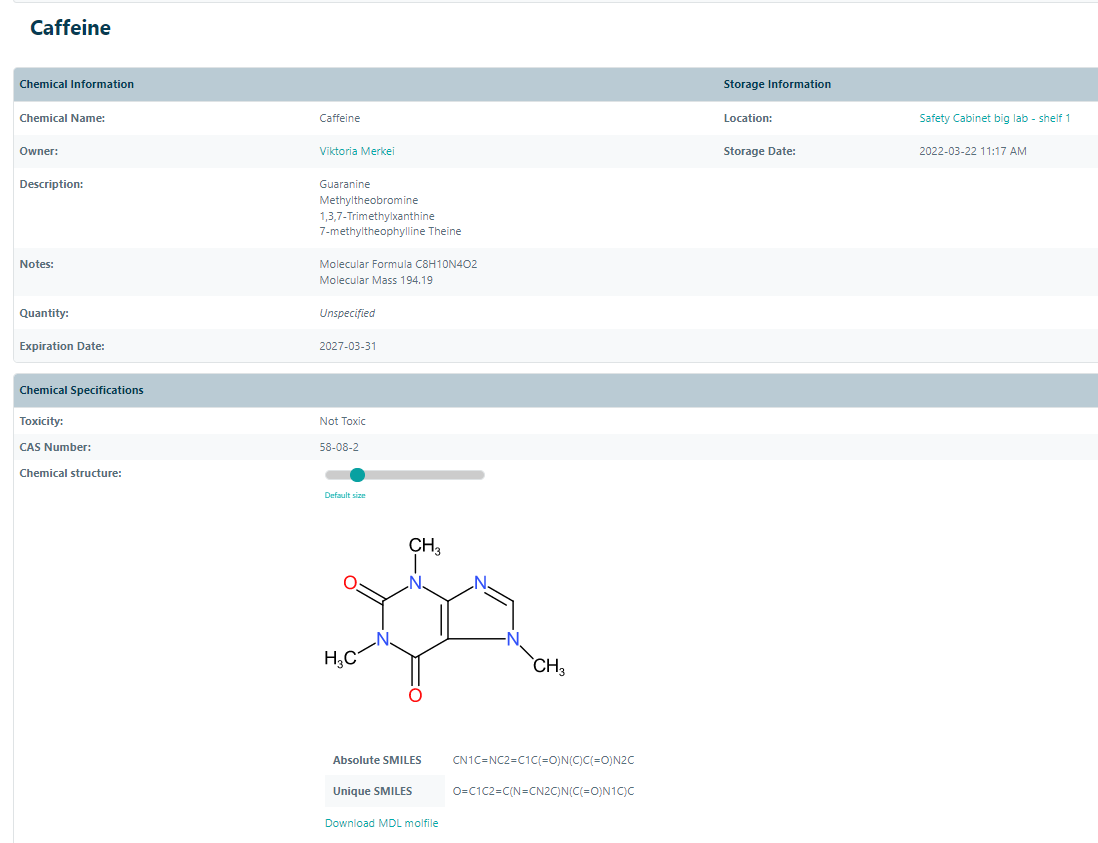
Importing and Updating Chemical Structures in Bulk
ChemAssist enables users to both create and update chemical structures for multiple samples at once. These bulk actions are supported by the Sample Batch Import and Sample Batch Update add-ons, that are available in the Marketplace.
When initiating a Sample Batch Import or Update action, you will be able to select the Chemical Structure field as a column option within the table view. The field is displayed as a text fields that exclusively accepts a chemical structure in SMILES notation. Once the import or update action has been initiated, the SMILES notation will be translated into a structural diagram and accordingly displayed for the sample.
Note: if you do not have the generated SMILES code to all your compounds in advance, you can add a general structure SMILES and after the import adjust the structures manually for your sample by redrawing it.
Customers with a Private Cloud or On-Premises installation can also use the System Admin Sample Import function to import samples with Chemical Field. As with the Sample Batch Import and Update add-ons, the Bulk Import template accepts the chemical structure in SMILES notation for the field’s value.
Tracking derivates by creating your Compound Library
Users can use the Sample Parent and Sample Lineage add-ons to symbolize derivatives of their molecules and compounds. Once activated, the Lineage add-on will display all the connected samples and experiments related to a given compound.
